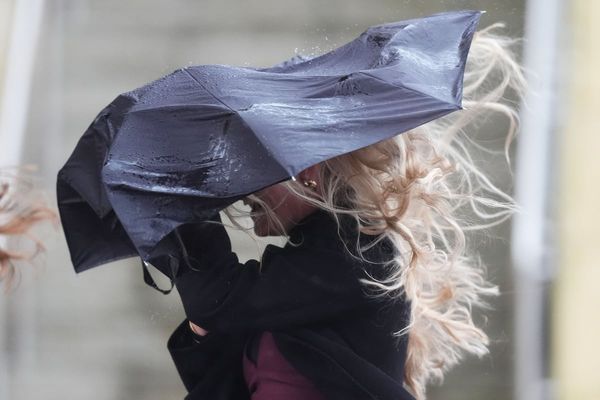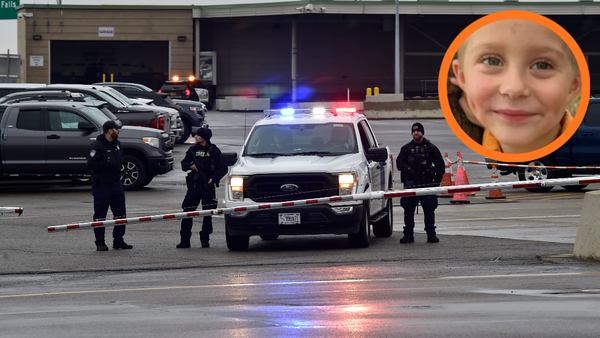
Bruce Lehrmann’s defamation case was dramatically reopened to hear new evidence from the former Seven producer Taylor Auerbach.
The new evidence delayed the verdict, which is now scheduled for Monday 15 April, and it remains to be seen whether it will influence the outcome.
When Justice Michael Lee hands down his decision in the Bruce Lehrmann v Ten & Ors defamation case, it will say whether the respondent has established, on the balance of probabilities, that Lehrmann raped Brittany Higgins in then defence minister Linda Reynolds’ office in 2019.
Being a civil proceeding, a defamation trial works on the balance of probabilities, rather than the higher standard of beyond reasonable doubt used in criminal prosecutions.
Here is what Lee has had to consider before reaching that decision.
Liability
The first step in the decision is to decide whether Lehrmann was identified by Ten on The Project in an interview with Higgins which was broadcast in February 2021. He was not named but was referred to as a senior adviser who worked in Reynolds’ office.
It is Lehrmann’s submission that he was identified in the program “by a large, indeterminate number of people”, according to final submissions filed in the federal court.
David Rolph, a professor of law at the University of Sydney law school and the leading academic expert in Australia on defamation law, says if Lee decides the respondents – Ten and the presenter, Lisa Wilkinson – did identify the applicant, they will be found liable.
“Because identification is one of three elements of a plaintiff’s cause of action in defamation of common law, if he’s not identified then there’s no liability,” Rolph says.
The two other elements are that the communication (in this case the interview broadcast on The Project) has been published to a third person and that the communication is defamatory.
If liability is established, the judge then turns to the defences.
Imputations
In his statement of claim, Lehrmann alleged that the broadcast carried four defamatory imputations.
The first is that he raped Higgins in Reynolds’ office; the second that he “continued to rape Brittany Higgins after she woke up mid-rape and was crying and telling him to stop at least half a dozen times”.
The third imputation is that whilst raping Higgins, Lehrmann crushed his leg against her leg so forcefully as to cause a large bruise; and finally that after he had finished raping Higgins, he left her on a couch in a state of undress with her dress up around her waist.
“Because of the seriousness of the allegation you have to be satisfied, positively satisfied, that that serious allegation is made out,” Rolph says. “So obviously the imputation here is a very serious allegation of criminality.
“So even though it’s not the criminal standard of beyond reasonable doubt, Justice Lee would have to be positively satisfied, on the balance of probabilities, that that was substantially true.”
The truth defence
Network Ten had two defences: truth and qualified privilege.
In their defence of truth, Ten and Wilkinson had to establish the “substantial truth” of the key allegations.
They are relying on Higgins’ evidence to the court as well as what she told several people, who also appeared as witnesses in the case, in the aftermath of the alleged rape.
It is Lehrmann’s submission that he “did not rape Ms Higgins” and “there was no sexual activity at all”.
“There is no independent evidence for a rape,” the applicant’s final submission says. “There is no rape examination, no doctors’ reports, no witnesses.”
Lehrmann denied the allegations and pleaded not guilty at his trial in the Australian Capital Territory supreme court, which was aborted due to juror misconduct. Prosecutors did not seek a retrial due to concerns about Higgins’s mental health.
Defamation law does not require strict, complete or absolute accuracy. “Minor or inconsequential errors of detail are irrelevant,” Rolph wrote last year in relation to another high-profile defamation case, Ben Roberts-Smith v Fairfax Media. “What matters is: has the publisher established what they published was, in substance, true?
“In that case the federal court found the newspapers were indeed able to establish the ‘substantial truth’ of key allegations around killing of unarmed Afghan male prisoners.
“So, even though people say defamation law in Australia has a reputation for favouring plaintiffs, this case shows even plaintiffs do sometimes lose defamation cases in Australia,” Rolph wrote.
Like the Roberts-Smith case, Lehrmann v Ten was heard under the defamation law in place before major reforms were introduced in July 2021 across most of Australia. The new defamation laws introduced a public interest defence.
Qualified privilege
Statutory qualified privilege requires the court to go through in fine detail all the journalistic and editorial decisions that were made before publication.
Ten argued that it was reasonable in the circumstances to publish that Lehrmann had raped Higgins.
In the witness box Wilkinson spoke about her experience as a journalist, the sources she relied upon, the steps she took to verify and factcheck before publication and the opportunity Ten gave to Lehrmann and others to comment.
Lehrmann submitted that Ten and Wilkinson acted unreasonably in broadcasting the interview for several reasons, including that they “had strong indications of the unreliability of their main source [Higgins]” and “the attempt to contact Mr Lehrmann for comment was a fiasco”.
Wilkinson said Lehrmann had 80 hours to respond to an email from The Project and “did nothing”.
The possible finding that sex took place
In the final oral arguments in December the court heard it might be open for Lee to find the pair had sex in the office but not be satisfied on the balance of probabilities that it was non-consensual.
Lehrmann’s lawyers argued that if that was found, their client should still receive substantial damages.
Ten’s lawyer, Matt Collins KC, argued that such a finding would amount to “wicked conduct of the highest magnitude” by Lehrmann in having brought the defamation case and he should receive no damages.
Wilkinson’s lawyer, Sue Chrysanthou SC, described such conduct, if that were the court’s finding, as “perverting the course of justice”.







